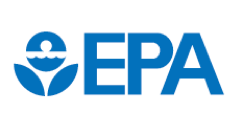Regulating PFAS at the Edge of Detection
By Linda Cook and Kirk O’Reilly | American Bar Association | June 21, 2023

Read the full article by Linda Cook and Kirk O’Reilly (American Bar Association)
"On March 29, 2023, the U.S. Environmental Protection Agency (EPA) published proposed regulations (88 FR 18638) for per- and polyfluoroalkyl substances (PFAS) drinking water standards. While stakeholders requested an extension, the comment period ended on May 30, 2023. If implemented, the regulations would establish limits for perfluorooctane-sulfonic acid (PFOS) and perfluorooctanoic acid (PFOA), along with four additional PFAS.
EPA proposes to set the maximum contaminant level goal (MCLG) for PFOA and PFOS at zero. A MCLG is a risk-based value defined as the maximum level of a contaminant in drinking water at which no known or anticipated adverse effect on the health of persons would occur, allowing an adequate margin of safety. An MCLG is used in the process of establishing MCL, which is a regulatory target that is as close to the MCLG as possible but incorporates considerations of technical feasibility and cost. Considering feasibility, including available analytical methods and treatment technologies, EPA proposes an MCL of 4 parts per trillion (ppt) or nanograms per liter (ng/L) for both PFOA and PFOS. These MCLs would set enforceable limits on the concentrations of these chemicals in public drinking water systems. The only chemical with a lower MCL is 2,3,7,8-TCDD, which has an MCL of 0.03 ppt.
Additionally, EPA proposes non-enforceable MCLGs for four additional PFAS hexafluoropropylene oxide-dimer acid (GenX), perfluoro-1-butanesulfonic acid (PFBS), perfluorononanoic acid (PFNA), and Perfluoro-1-hexanesulfonic acid (PFHxS) as a mixture using a Hazard Index (HI) approach, which considers the individual and additive toxicity of co-occurring chemicals. While exact concentrations thresholds are not provided for the four additional PFAS, the health-based values used to calculate the HIs are 9 ppt for PFHxS, 10 ppt for GenX and PFNA, and 2000 ppt for PFBS."
Topics: